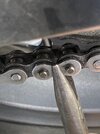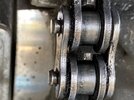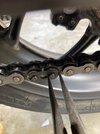Rabbit
Well-Known Member
Has anyone used an EK screw master link? It promises easier and more consistent install using only a pair of pliers and an 8mm wrench. I really like the simplicity of it vs a rivet style. My concern is the rivet leaves some extra bits hanging off the side which could rub. Thoughts or experiences??





